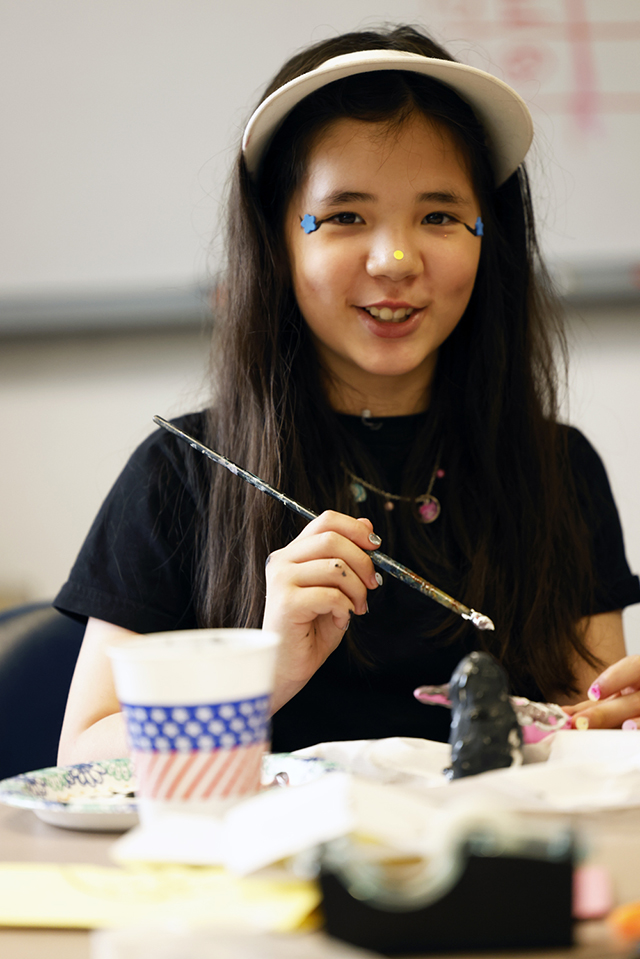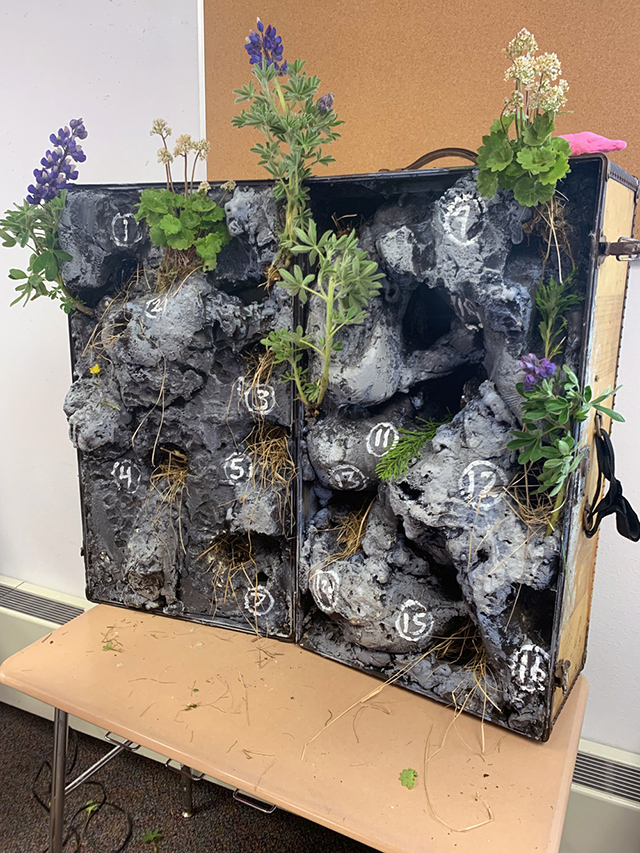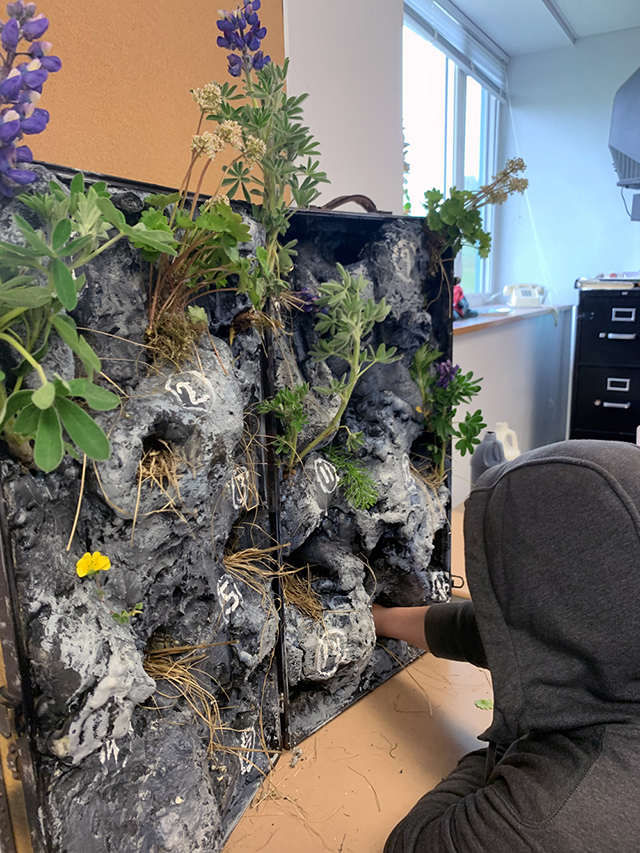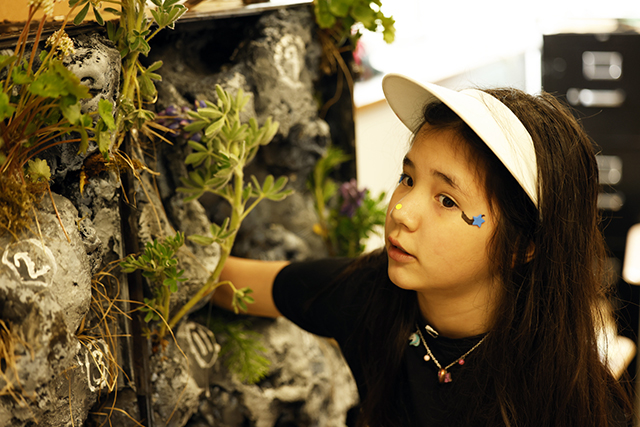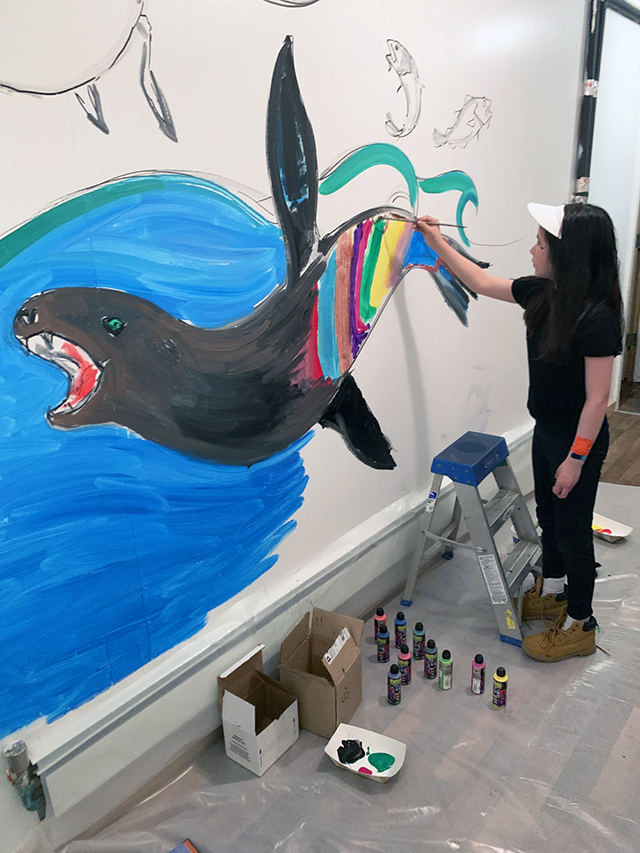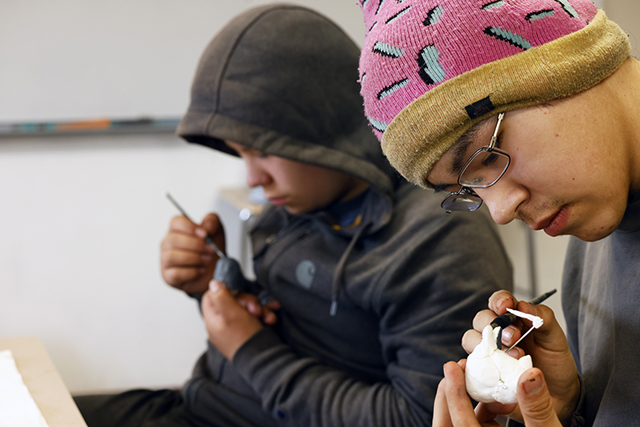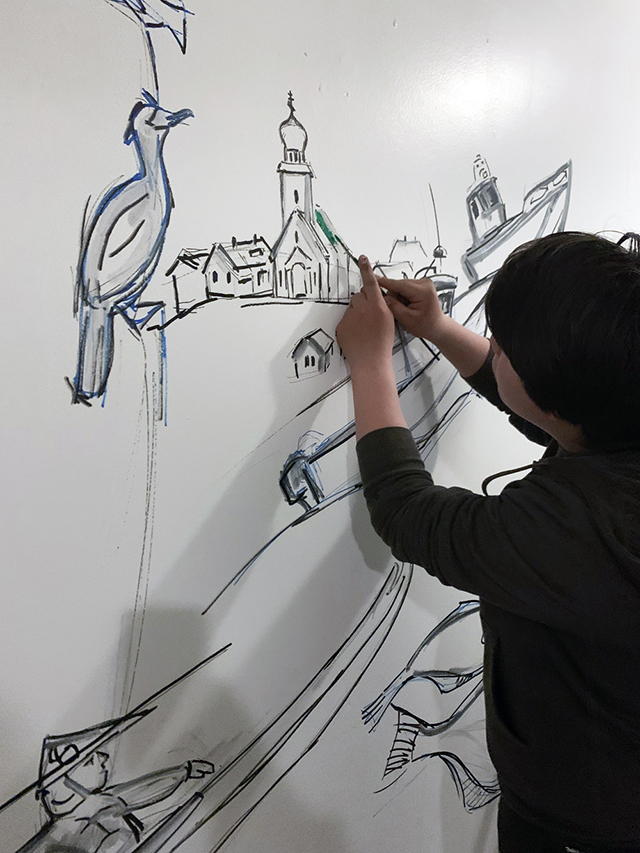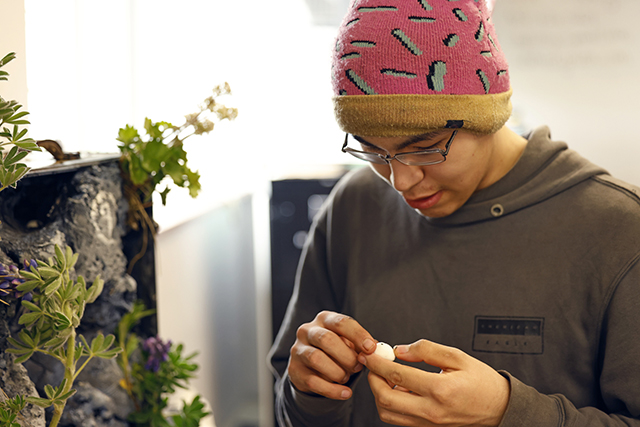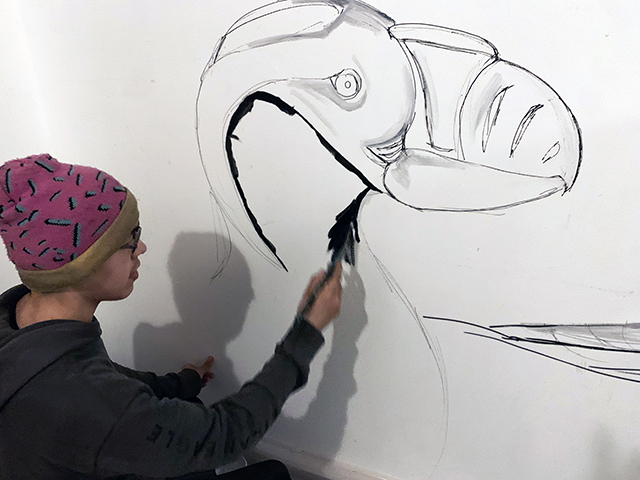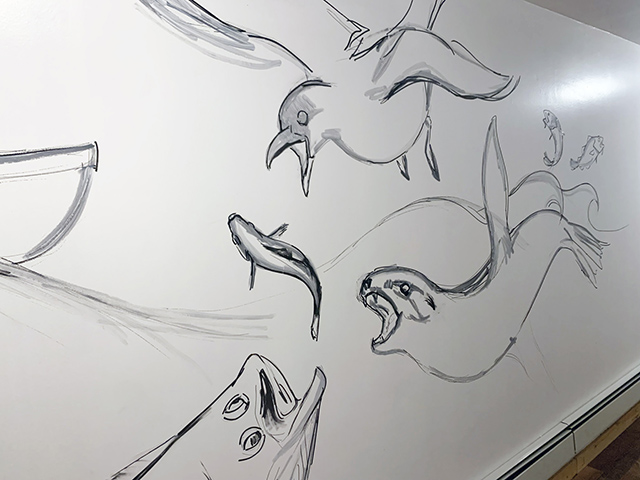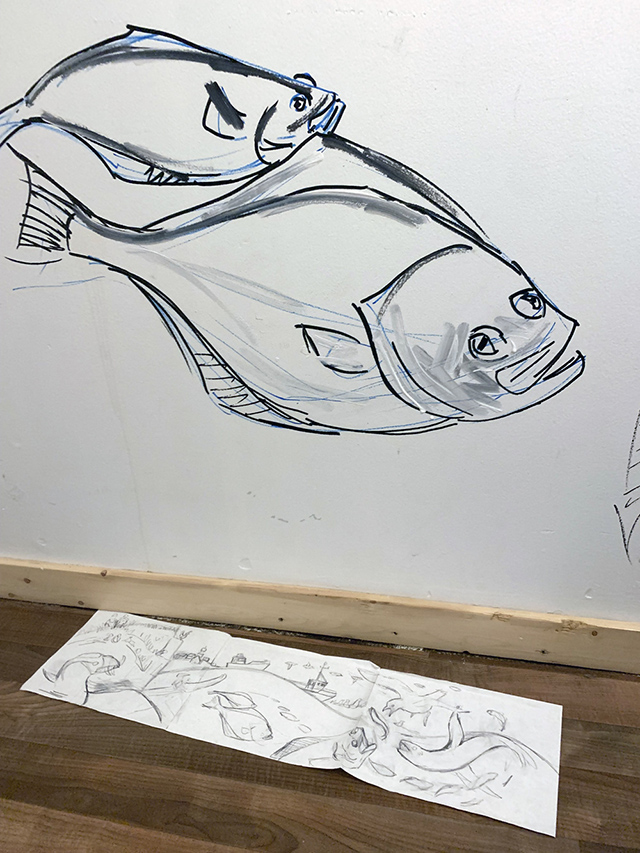We started the day by gathering flowers, dried grasses and other found objects to finish construction of our artificial seabird nesting cliff. The cliff is full of cracks and crevices where seabirds could nest. We numbered the nest cavities so we can conduct a simulated study of seabird reproductive success. Reaching into seabird crevices and burrows is called “grubbing” and our artificial seabird cliff is called “The Grub Hub.”
Maurice pointed out that puffins nest in crevices on the Pribilofs because wily foxes would dig up any earthen burrows they attempt to nest in. After discussing which species nest in crevices and why, it was time to conduct our first round of nest cavity checks. The early burrows were easy to find eggs in, but our young researchers were soon challenged by complex curving crevices with multiple endings. The smallest student proved the mightiest because her small hands could slip into the tightest auklet crevices. Of our 15 nest cavities, 13 contained eggs.
We painted our seabird chick models before heading to the Rec Hall to work on our mural entitled “St. George through Our Eyes.” Tristan worked on the church and town while Maurice painted a huge puffin. It seemed like most of the village dropped by to check on our progress. Emma added a magic and mystery to the mural as she painted a rainbow seal and vibrant rockfish.
